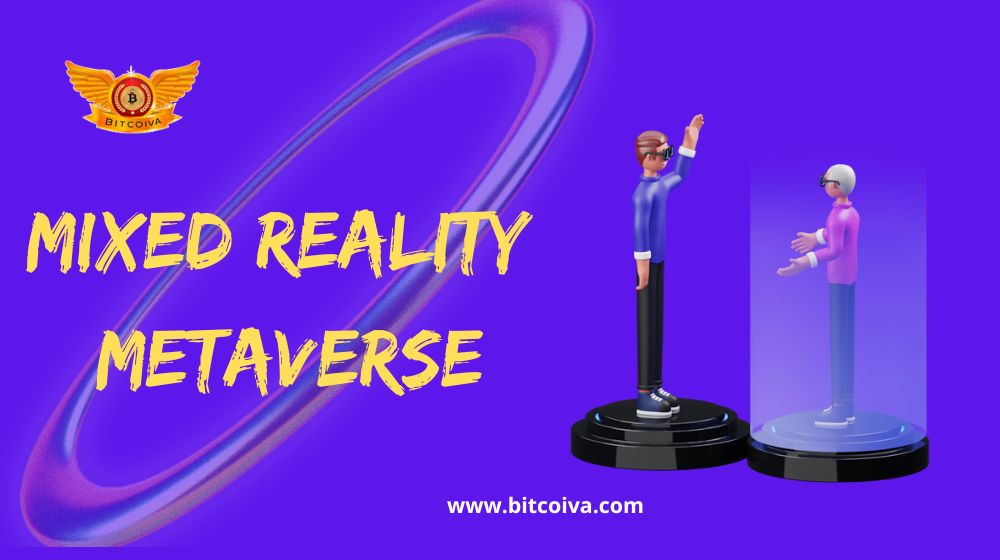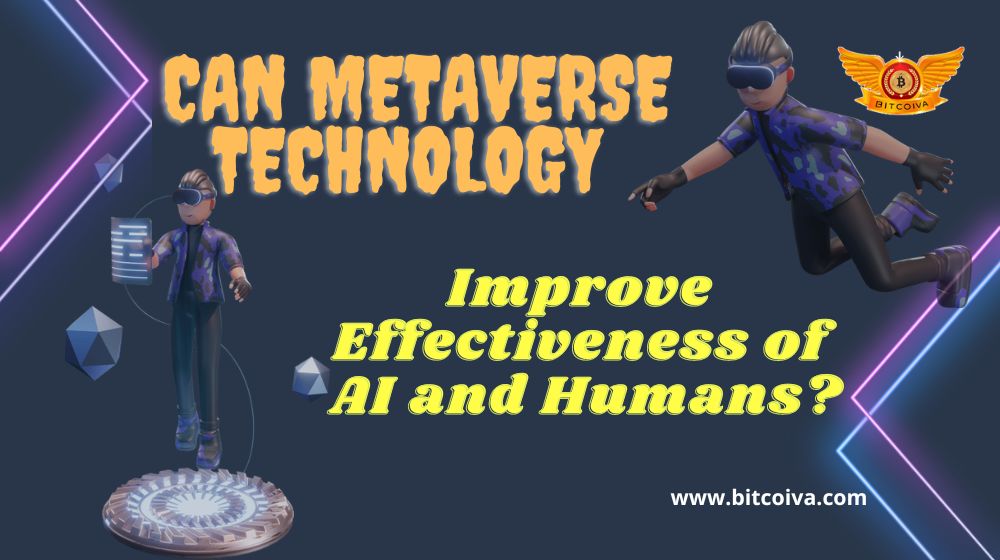The idea of the metaverse is a persistent, online, 3D environment that merges several virtual worlds. The immense growth of Metaverse believed to revolutionize AI technology. Metaverse Technology Improve the Effectiveness of AI and Humans.
What is Metaverse Technology
The Metaverse Technology, which mixes blockchain with artificial intelligence, virtual reality, and augmented reality to create what known as XR (extended reality) experiences, is a sign of the next era of digital connection.
A metaverse is a 3D virtual environment that was once accessible only with a VR headset. However, it is now also available on browsers, making it essentially accessible on any device. Through eye motions, voice commands, and feedback controllers, users can navigate this universe. The user can experience the immersive world and observe the metaverse in action with the headset. Through the use of avatars, people communicate with one another and engage in many activities, including shopping and gaming.
A research by Emergen Research projects that the metaverse market would exceed $800 billion by 2028. Gaming, education, business, government services, socialising, and many other things can all use metaverse technology.
What is AI
Machines that mimic human intelligence referred to as AI.
A subfield of computer science called artificial intelligence (AI) aims to create intelligent machines that can replicate human intelligence. Artificial intelligence (AI) systems powered by algorithms that search through enormous volumes of labelled training data for correlations and patterns before making predictions. Compared to humans, AI systems can interpret data in a much faster and more precise manner.
Intelligent assistants like Alexa, self-driving cars, chatbots, Robo advisers, email spam filters, and now metaverses just a few examples of how AI used. As a result, tech communities frequently question how AI will influence the metaverse.
How do Blockchain, XR, and AI Interact
The metaverse has a ton of potential applications made possible by the underlying technologies, leaving only room for imagination.
A virtual universe that has never existed before made by XR. Decentralization brought about by blockchain results in the removal of centralised government, transparency, and irreversible transactions.
The metaverse’s fundamental building block, nonfungible tokens (NFTs), is a creation of the blockchain. All metaverse objects, including things like land, cars, ships, and gifts, are essentially NFTs. If NFTs are destroyed, the metaverse collapses.
You can get around problems like poor interactive quality and develop new goods like live virtual conferences thanks to artificial intelligence in the metaverse. It enhances the metaverse’s predictability and logical interfaces. Avatars’ lives are made easier by this, which also makes games more dynamic, interactions more interesting, and businesses more prosperous.
What Difficulties did the Metaverses Face
The enormous potential for growth in the metaverse technology has led to difficulties.
As technologies, the VR and AR of the preceding age had drawbacks such a lack of peripheral vision and graphical constraints. The metaverse’s activities simply aren’t as entertaining as those in the real world or even traditional internet gaming.
Another area where many metaverses struggled was self-reliance. In the early stages of the metaverses, there simply wasn’t the technical expertise or user base to generate sufficient use cases to sustain the economy. The number of use cases and monetization choices are growing as a result of developments in VR and AR, as well as the incorporation of metaverses with AI.
Metaverses have adoption problems, just like any new technology, but this is slowly changing thanks to initiatives like Decentraland (MANA), The Sandbox (SAND), and the current MeetKai metaverse. On Decentraland, visitors can explore thrilling games while buying and selling virtual property. In contrast to Meetkai, which has developed a realistic AI-powered metaverse that mimics the actual world and is accessible via browser on smart phones and PCs for maximum accessibility, Sandbox provides a game environment that enables players to create, share, and sell gaming materials.
The sophisticated fusion of XR and AI technology has produced more captivating virtual worlds, which has improved adoption and consequently increased income for all ecosystem participants.

The Mixed Reality Metaverse
The mixed reality (MR) metaverse phenomena is a result of the fusion of AI with XR.
Human-AI engagement has typically only occurred in B2B settings up until now. However, projects that demonstrate the integration of AI into B2C are currently appearing. For instance, Meetkai shows how productive life could be when humans and AI are integrated. Meetkai improves everyday activities like shopping, working in an office, and participating in outdoor activities like hiking and trekking by utilising AI-enabled technology.
Users can not only try on clothing at their favourite brand’s metaverse store while still in bed and haggle with vendors in real time, but they can also have their purchases delivered right to their doorsteps.
With a full complement of productivity tools, they can even operate from their virtual office.
You can find an astounding amount of metaverse projects focused on games everywhere you go, such as Roblox, Blocktopia, Nakamoto, and so on. This implies that the introduction of the mixed reality metaverse is a landmark development in the field of metaverse.
How will the Metaverse Improve AI
Metaverse conversational AI systems resemble human-to-human interaction.
The metaverses of the coming century are powered by voice assistant AI, which powers use cases including personalised suggestions and lifestyle help. For instance, users can access the metaverse and utilise an AI-powered bot to guide them on a tour of several breathtaking locales rather than going to a travel agency’s office or speaking to their overworked customer care.
In a metaverse, an AI concierge is a personified machine that makes personalised recommendations depending on the preferences of the avatar. The potential of this use case is clear when you consider the volume of data that is now available on each individual.
The metaverse uses natural language processing to make it more intimate than the real world. Voice AI can understand requests made to avatars in a more human and natural language while taking into account unique tastes and preferences.
The metaverse interface has become smarter as a result of speech technology’s increased contextualization and personalization. For instance, voice support has become as simple as speaking with a buddy thanks to Meetkai’s first AI concierge. Ask for a recipe for “by addressing “Hey! Can you find me a two-person recipe for wonderful pasta?” And in a matter of seconds, you’ll get exactly what you asked for.
In what ways does XR foster intense cooperation in the metaverse
White-collar work is made possible in an intimate office setting by XR, which celebrates dynamic collaboration in the metaverse.
Users are able to engage in tasks that are considerably more enjoyable, interesting, and beneficial thanks to an AI-driven metaverse. For instance, MeetKai’s conversational AI can understand more complex speech, offer customised results, and respond fast by remembering user preferences and context in a realistic conversation about diverse topics in multiple realities.
An XR device also offers data overlay, which opens up a variety of applications. This is very helpful for creating or producing use cases in a metaverse. An XR-backed environment fosters a sense of community, which is essential for a close-knit office setting.
When there are only a few requirements to be satisfied, XR is particularly effective. For instance, you can desire quiet lighting and specific music when doing something as basic as playing a board game. What you want can be determined and planned for in an interactive XR environment. A virtual conference room may be noticeably superior to a physical one.
visit us on: www.bitcoiva.com

